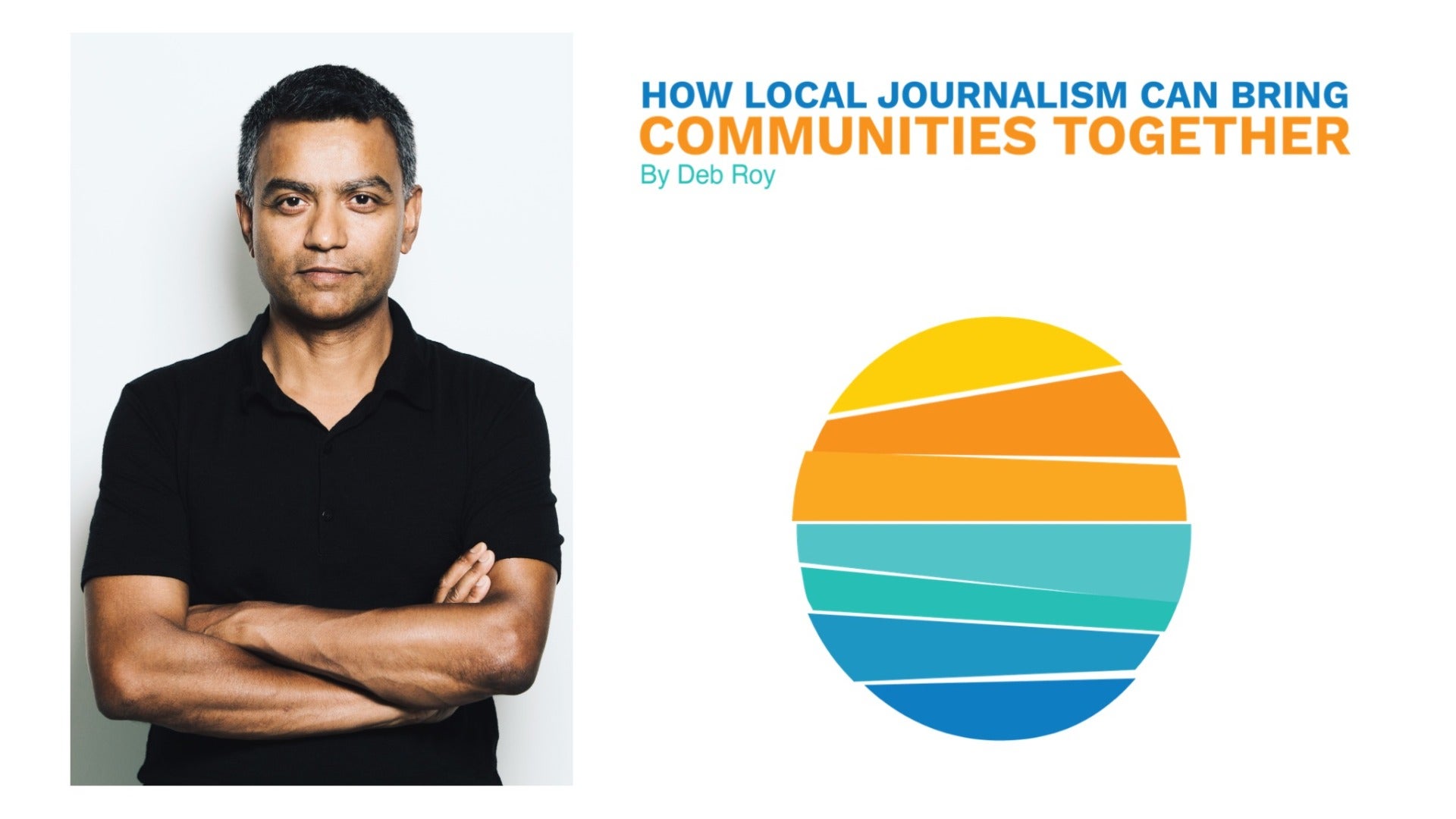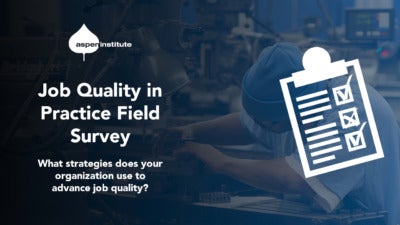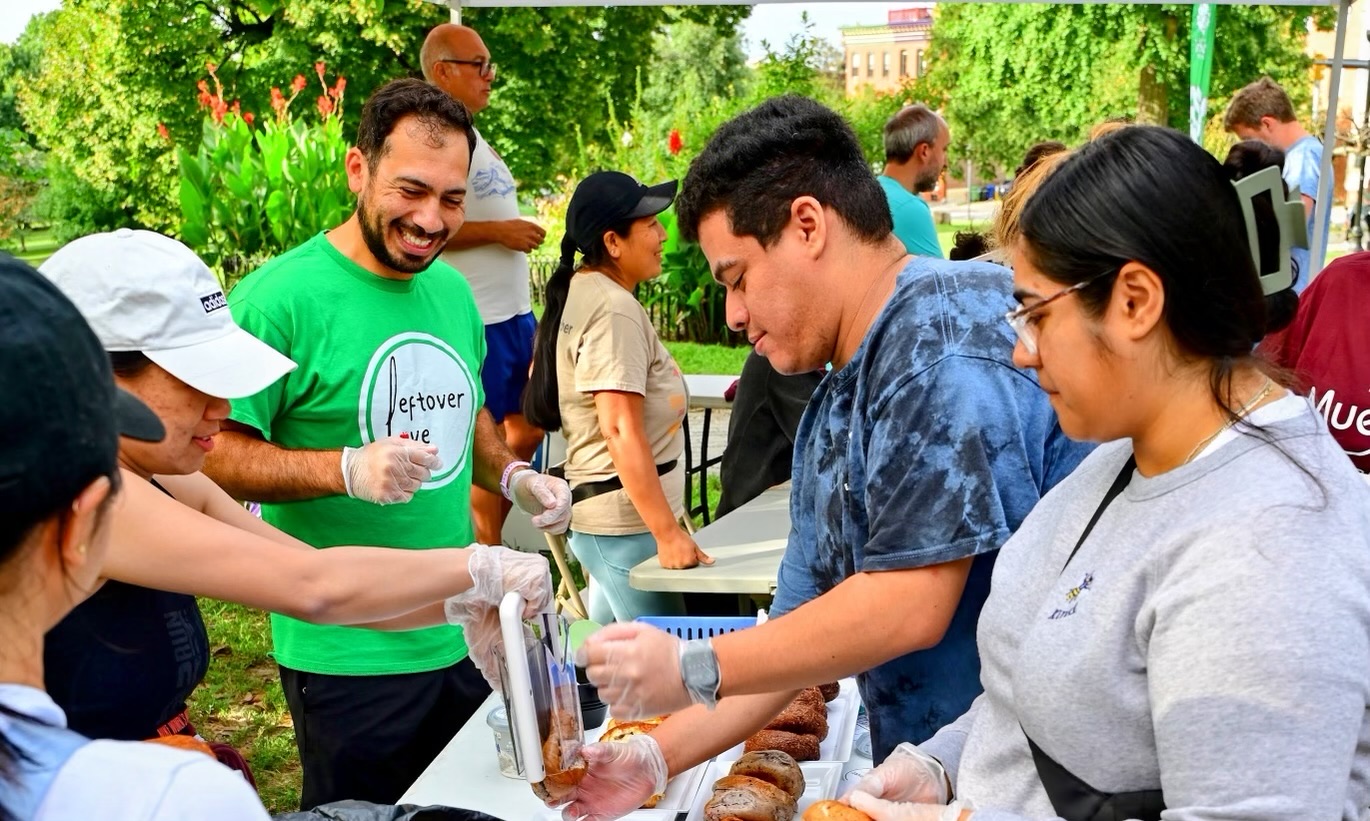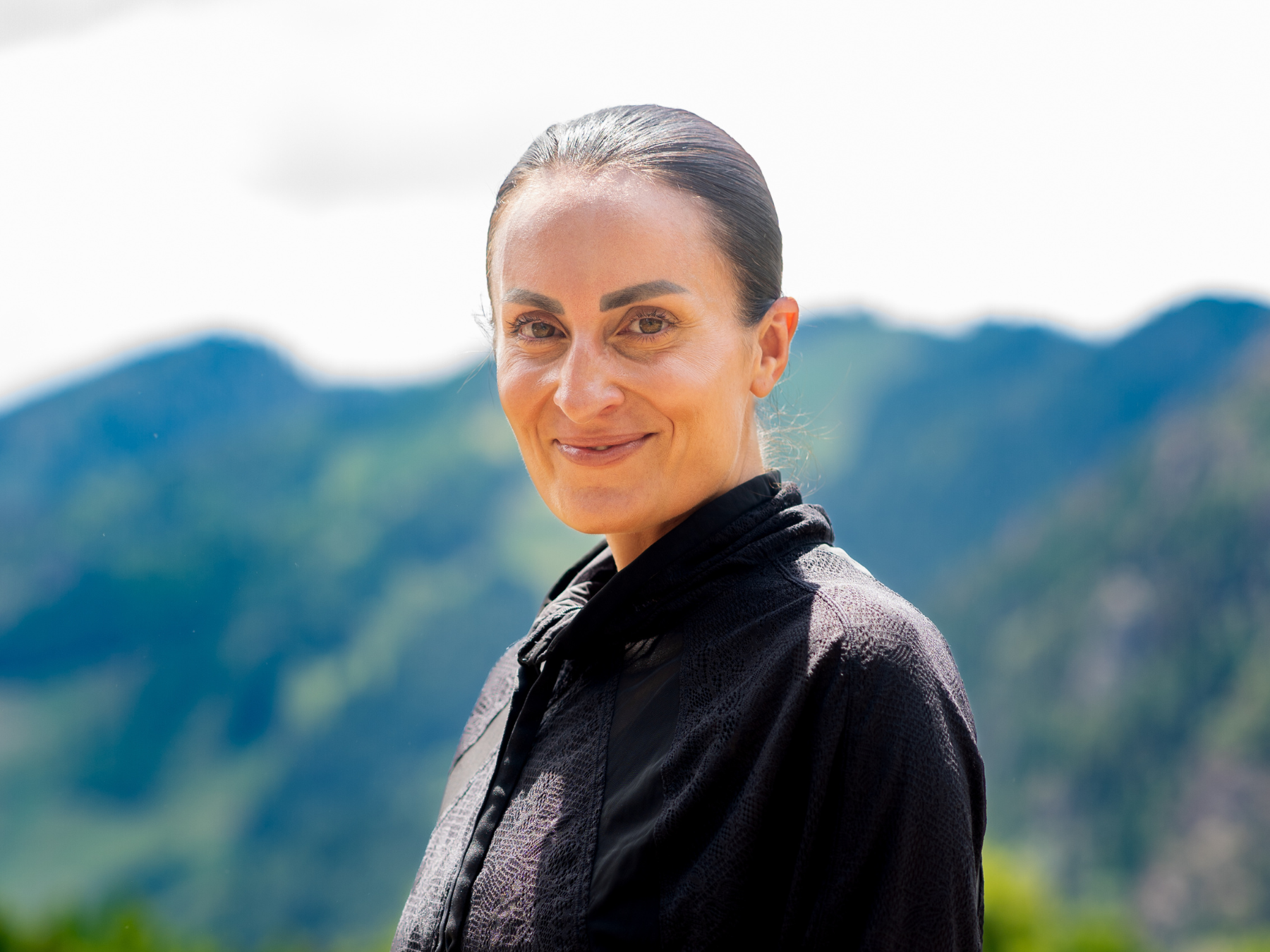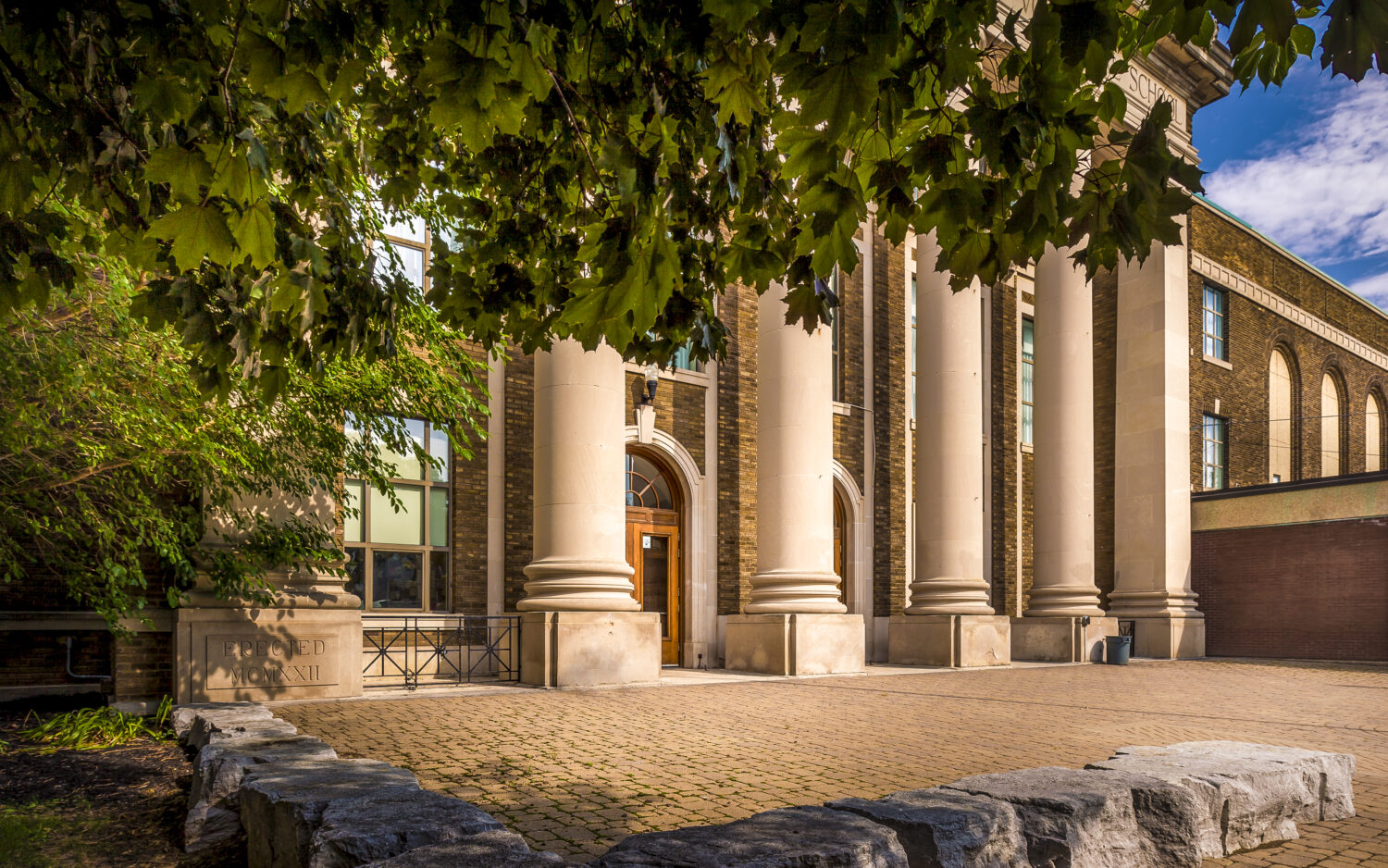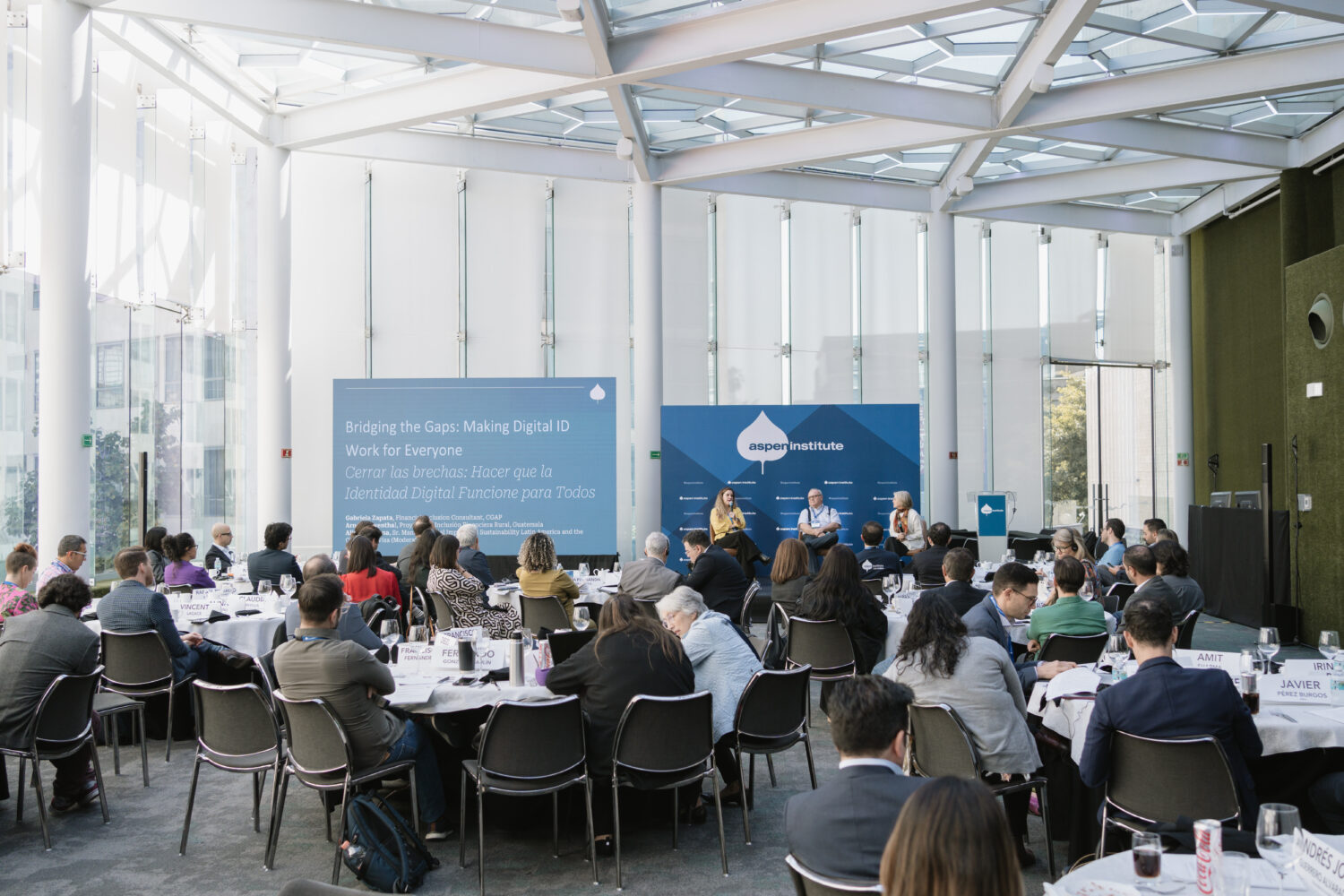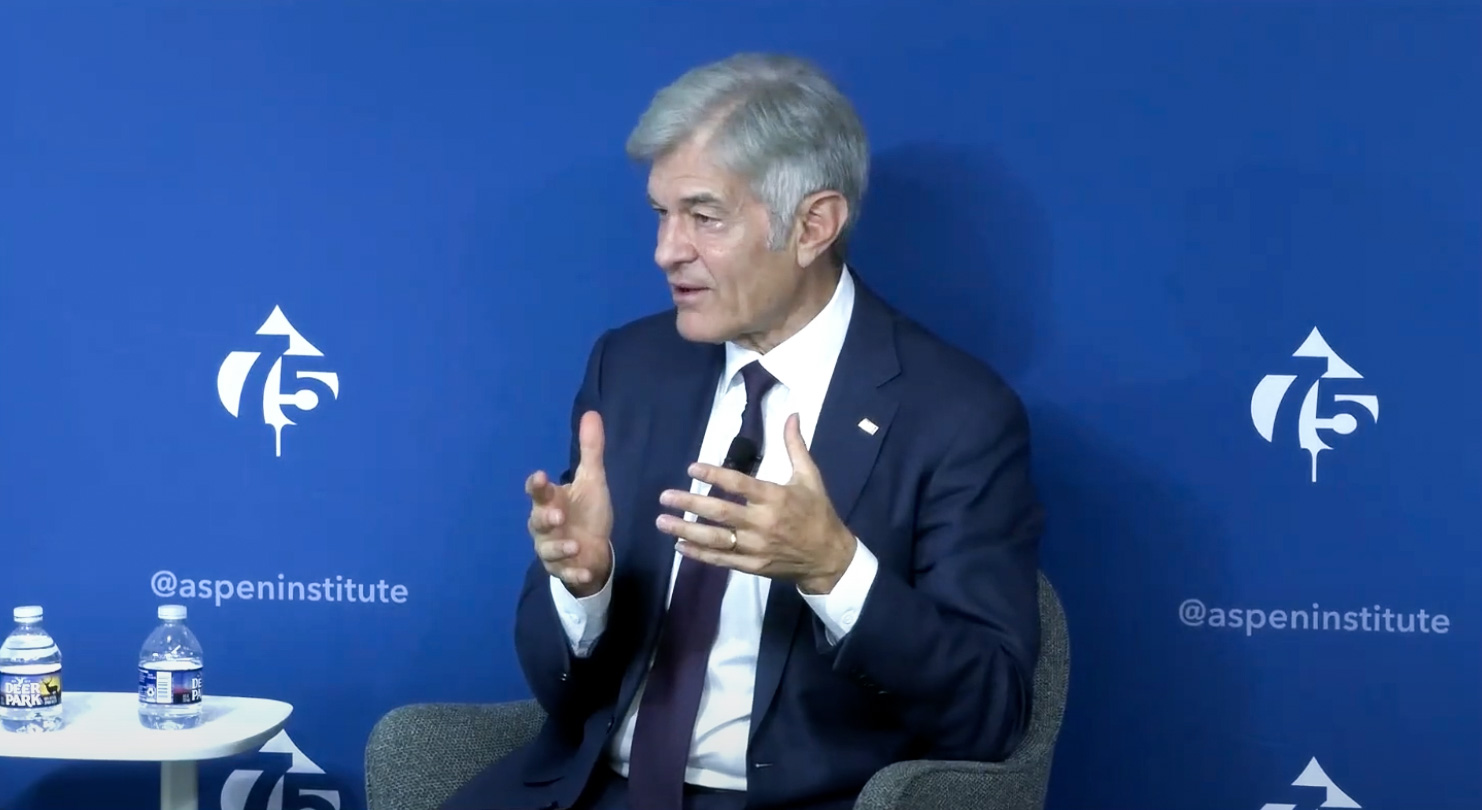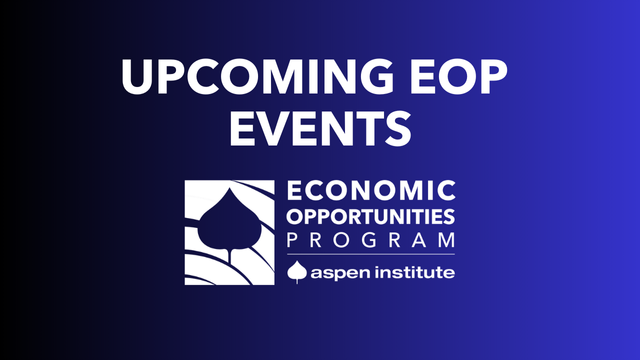EPILOGUE
How Local Journalism Can Bring Communities Together
By Deb Roy, Director, MIT Center for Constructive Communication
We are pulling apart as a nation, with our democracy hanging in the balance. The empirical evidence for deepening social fragmentation and toxic polarization is clear. The lines of division run along dimensions of race, gender, class, often manifested by political parties pulling farther apart. Alarming survey data from the past year tells the story. We characterize each other in extreme terms: 85% of Democrats believe the Republican party has been taken over by “racists,” while 84% of Republicans believe the Democratic party is controlled by “socialists.” We embrace radically inaccurate caricatures of the other side: A representative sample of Republicans estimate that 38% of Democrats are LGBTQIA+, when in reality the number is 6%. Meanwhile Democrats believe over 44% of Republicans earn over $250,000 per year, when in reality only 2% do.
Our conceptions about each other are increasingly detached from reality.
We also tell pollsters we are ready to act, that we are prepared for fight or flight. In a country with more than 400 million guns, 30% of Republicans (40% who trust far-right news) and 11% of Democrats say they are ready to resort to violence to save the country. Meanwhile 41% of Biden voters and 52% of Trump voters favor their states seceding from the union to form their own separate country.These and countless other indicators all suggest a nation at a precipice.
Many Causes
Many factors conspire to drive today’s toxic polarization and societal fragmentation. Major drivers include deep and worsening economic inequality; government inaction on public concerns (e.g. the majority of the U.S. has long wanted stricter gun control); “conflict entrepreneurs” who profit from dividing us; and geographical self-sorting and its modern descendant, digital self-sorting via echo chambers, which include journalists and social-media-induced filter bubbles. The harms caused by social media are a vast contributor to the problem. As social psychologist Jonathan Haidt explains, social media is making us “structurally stupid” by eroding all three social forces required for a functioning democracy: social capital (via networks of trust), strong instititutons, and shared stories. Recent revelations demonstrate the unintended consequences of profit-and-attention-seeking social media platforms in fostering misinformation, divisiveness, and hate. For example, researcher Chris Bail demonstrates how social media creates a systematically distorted view of others — in his words, a “social prism” — that leads us to form warped destructive mental models of others. Many of the critiques leveled at social media apply equally to the incentives and the consequences of national mainstream media, which are a major source of the content distributed via the platforms.
The Role of Local Journalism
Trust in virtually all institutions has been on a half-century-long decline, with one significant exception: local news media. This positions journalism uniquely to leverage its “trust capital” to play a leading role in strengthening social ties that undergird a functioning democracy.
I believe there are three main jobs that can best be done by local news organizations: hold powerful people and institutions to account, provide and explain useful information to residents, and build a sense of shared community in an increasingly pluralistic society.
All three jobs are essential, and all three are poised for innovation. The third area — the role of local journalism in strengthening community understanding — holds the greatest potential for counteracting the toxic polarization and societal fragmentation that threaten the foundations of a functioning democracy. Local news organizations can help their audience see and hear the humanity of others.
Listening to Others
Simply exposing people to the viewpoints of others does not always bridge divides. In fact on social media platforms, the opposite often happens. Yet, extensive studies have shown that hearing the experiences of others increases mutual respect, whereas hearing facts to support opposing viewpoints does not.These findings suggest that trusted local news organizations should share the diverse personal stories of local residents, highlighting lived experiences that complicate simple narratives pitching us against one another. And when facts are the focus — as they must be for a functioning democracy — news organizations can foster viewpoint diversity by showing their audience how the same fact may be experienced in totally different ways by different members of the community. Exposure to the experiences of others may not change a reader’s mind about an issue, but it can change their mind about the legitimacy of positions different from their own when they hear how different people relate to the same facts.
Leveraging Emerging Technology
Much of the disruption in local news is rooted in technological changes driven by the pervasive reach of the Internet combined with AI algorithms that power modern online experiences.
The same technologies that have disrupted local news can be channeled to transform and strengthen local news organizations.
What if we had a social platform designed as an inverse of Twitter, one that is optimized to discover opinions that are shared by otherwise polarized opinion groups? That’s what the designers of Pol.is have created. This tool can hold a mirror up to a community and highlight areas of common ground. It has been used by communities around the world to make progress on otherwise intractable political logjams. Local news organizations could play an active role by learning how to use a tool like Po.lis as a scalable way to find bridging opinions and amplify them as a basis for resolving conflicts.Or, imagine a communication platform that brings people together in small intimate conversations where they engage in real talk about their own life experiences, combined with analytics to find themes and connections across experiences. This was the aim that a group of us had in mind in creating the Local Voices Network (LVN). LVN has helped local news organizations listen to community members to understand their concerns and incorporate that understanding into their reporting. By finding connections across geographically dispersed community conversations, local news organizations could weave together a new kind of peer-to-peer network grounded in local voices. A lesson we have learned from systematically analyzing people’s shared personal experiences is that the concept of “public opinion” is too narrow to serve the full needs of a healthy democracy. We also need to understand “public experience.” Local newsrooms can use platforms such as LVN to surface and amplify a community’s shared stories. Local news organizations can become the leaders of a new grassroots movement to engage diverse communities and reflect their perspectives, experiences, and opinions in ways that reverse the dangerous trends towards toxic polarization and societal fragmentation. Technology is no silver bullet. Optimized for the wrong aims, we can end up with Facebook. By bringing people and technology together in new ways, powered by civically engaged newsrooms, we can begin to heal our wounded society.
 Deb Roy is Professor of Media Arts and Sciences at MIT where he directs the MIT Center for Constructive Communication (CCC). He is also co-founder and CEO of Cortico, a nonprofit social technology company and deployment partner of CCC. In collaboration with colleagues at CCC, Cortico, and a growing network of collaborators, Roy designs human-machine systems for understanding and navigating social media media ecosystems, and for creating new communication spaces for stronger democracy.
Deb Roy is Professor of Media Arts and Sciences at MIT where he directs the MIT Center for Constructive Communication (CCC). He is also co-founder and CEO of Cortico, a nonprofit social technology company and deployment partner of CCC. In collaboration with colleagues at CCC, Cortico, and a growing network of collaborators, Roy designs human-machine systems for understanding and navigating social media media ecosystems, and for creating new communication spaces for stronger democracy.
